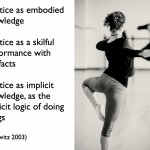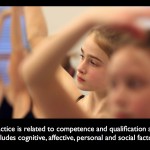Coding the future
The debate over computer science, digital literacies etc. in the UK is still continuing. And the success of the Raspberry Pi computer – selling out of its first 70000 production run in under a week shows the demand and interest in coding and computers in general.
One driver of the debate is that employers are unhappy with the competence and knowledge of potential employees. But this is not new. Employers have always moaned that job applicants do not have the right skills, aptitudes, attitudes – whatever. And it is always the fault of the schools or universities. Maybe it is time that employers started thinking about their own role and responsibilities for training a future workforce. And that includes the IT industry. Of course curricula need updating. Learning how computers work is probably more of a democratic necessity rather than for employment or the economy. There is a danger that we evolve as a society of consumers essentially controlled by the technology of a few major corporations. You know who they are!
But just tweeking the school curriculum or weeding out production fodder university courses will not solve the problem. The real issue is how we view learning – how we create learning environments outside the classroom and how we value learning that takes place outside the formal education sector.
I like the following thoughtful comments from Chris Applegate on his blogpost ‘Why it’s not just about teaching kids to code‘
Secondly, there’s a spectrum of challenges, but there’s also a spectrum of solutions. It’s not just schools and universities that need to bear the burden. As I said, coding is a practice. There’s only so much that can be taught; an incredible amount of my knowledge comes from experience. Practical projects and exercises in school or university are essential, but from my experience, none of that can beat having to do it for real. Whether it’s for a living, or in your spare time (coding your own site, or taking part in an Open Source project), the moment your code is being used in the real world and real people are bitching about it or praising it, you get a better appreciation of what the task involves.
So it’s not just universities and schools that need to improve their schooling if we want to produce better coders. Employers should take a more open-minded approach to training staff to code – those that are keen and capable – even if it’s not part of their core competence. Technology providers should make it easier to code on their computers and operating systems out-of-the-box. Geeks need to be more open-minded and accommodating to interested beginners, and to build more approachable tools like Codecademy. Culturally, we need to be treat coding less like some dark art or the preserve of a select few.


